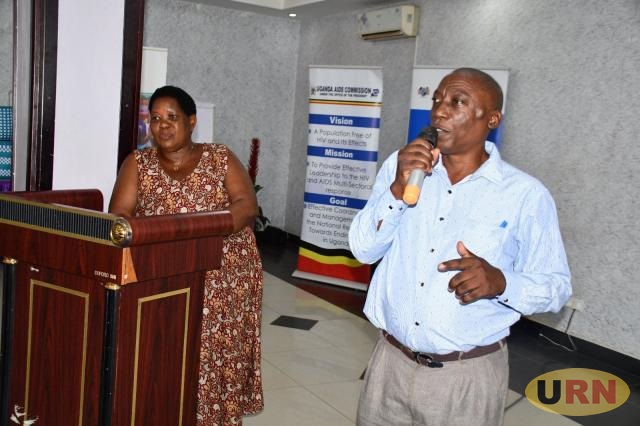
Mbarara, Uganda | THE INDEPENDENT | Health experts in Mbarara City have expressed concern that people living with HIV in care are dropping out.
The HIV focal person in Mbarara City Dorcus Twinabaitu to a media training session on Tuesday that many young women and girls stop their treatment a few months later after being put into clinics and starting on ARVs.
Twinabaitu said it is of concern and alarming as these girls contribute to the spread of HIV when they return to the community.
According to Twinabaitu, between October and December, 3,441 young women and girls aged 20-29 enrolled in care, reducing to 3,273 from January to March.
She said that there is a significant increase in new HIV cases among young women and girls aged 15 to 29 in comparison to young men and boys of the same age.
She said that the high numbers of new infections are a result of many young girls engaging in unprotected commercial sex with men over 45, because of their economic reasons, which poses a challenge.
Twinabaitu said that in Mbarara City, the number of new HIV cases from October last year to March this year is higher in women than in men noting that 628 women have been diagnosed compared to 408 men.
She added that the prevalence was high among young women, with 185 cases among those aged 20 to 24 and 158 cases among those aged 25 to 29 in contrast, to 34 cases among boys aged 20 to 24 and 91 cases among those aged 24 to 25.
Micheal Matsiko the head of Uganda Aids Commission Southwestern region said that the drop in young girls and women from care doesn’t reflect well in the fight against HIV since the aim of suppressing the virus to reduce the risk of infecting is not achieved.
He blamed the drop out on the people being ignorant of the dangers and also people getting tired of the daily drugs, and others moving from one place to another and trying to keep their secret.
Dr Stephen Asiimwe, head of Research at Uganda AIDS Commission also expressed concern over the increasing number of new infections that have led to HIV prevalence in the Ankole region being higher than the National prevalence standing at 5.1%.
Besides Buhweju and Mitooma which have slightly lower HIV prevalence the other 10 districts and 1 city in the Ankole region, the HIV prevalence is higher with Mbarara District having the highest prevalence at 14.4%, Kiruhura at 9.5%, Mbarara City 8.1%, Isingiro 3.0%, Ibanda 7.3%, Ntungamo 5.9%, Sheema 7.5%, Bushenyi 9.2%, Buhweju 3.8%, Mitooma 4.7%, Rubirizi 6.1%.
Moses Bindeeba, a person living with HIV asked the government and other stakeholders in the fight against HIV to recruit sign language experts at Health centers to assist the deaf.
****
URN
 The Independent Uganda: You get the Truth we Pay the Price
The Independent Uganda: You get the Truth we Pay the Price



